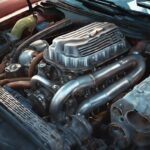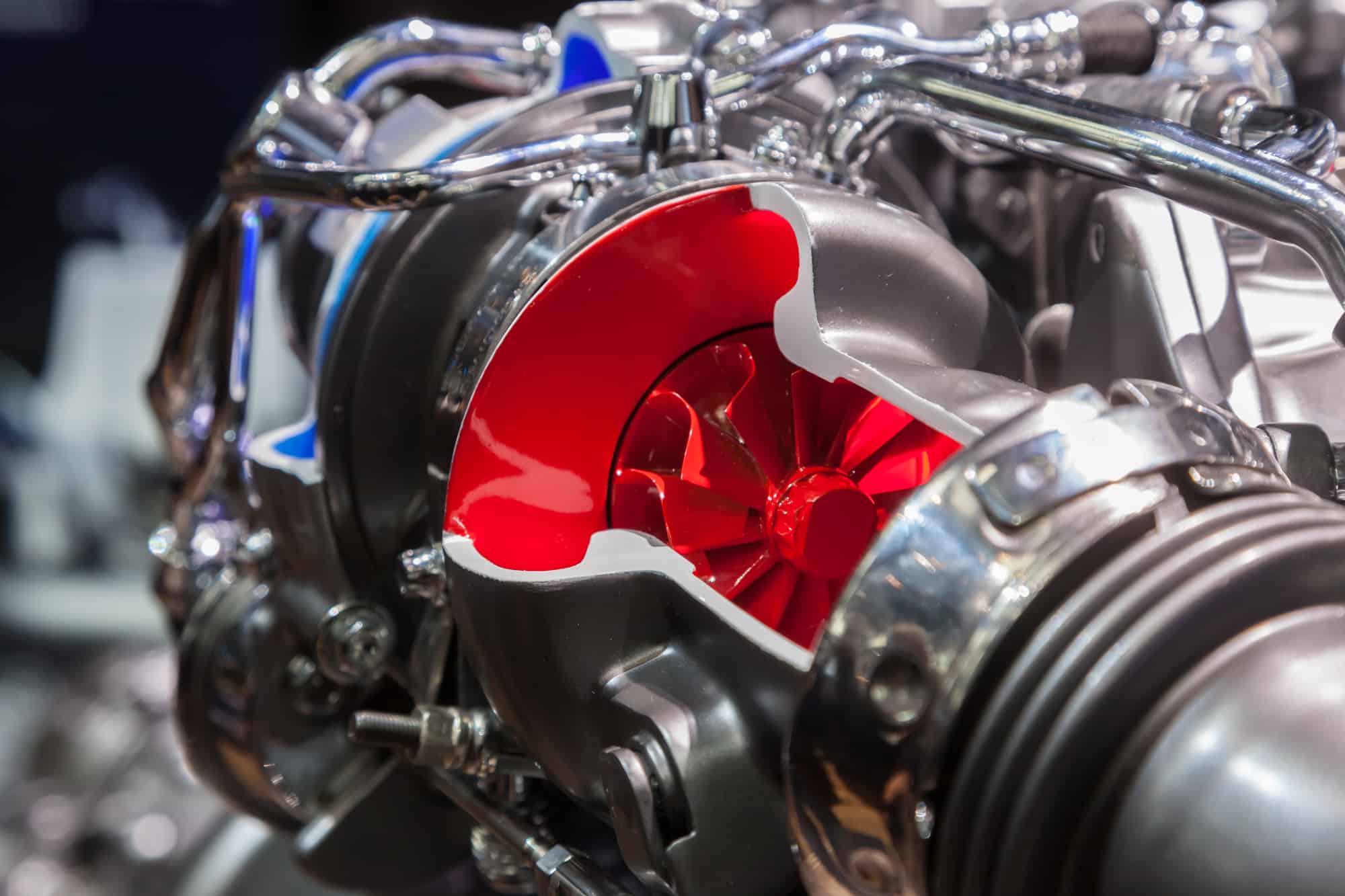A boost leak is a common problem that many car owners experience. Boost leaks occur when there is a leak in the intake system when the air that has travelled past the MAF sensor is leaking out before it reaches the engine cylinders.
One of the most common symptoms of a boost leak is a loss of power. This is because the turbocharger is not able to maintain the desired level of boost pressure, which can lead to a decrease in power.
Other symptoms include a slow turbo spool, which means that the turbocharger takes longer to reach its maximum boost pressure, poor fuel economy, and black smoke coming from the exhaust pipe during acceleration.
As an Amazon Associate we earn from qualifying purchases.
A boost leak can cause damage to an engine if left untreated, and can also lead to other problems such as reduced fuel efficiency and increased emissions. In this article, we will take a closer look at the symptoms of a boost leak and how to diagnose and repair the problem.
Turbo Boost And Leak Problems (What is a Boost Leak?)
A boost leak is a common problem, especially on older, higher-mileage turbocharged engines. It occurs when there is a leak in the system that is responsible for delivering air into the engine.
This leak causes a loss of pressure, which can result in a loss of power and poor performance. Boost leaks are common in turbocharged and supercharged engines and can cause damage to the engine if left unrepaired.
Boost leaks can occur in a number of places in the turbocharger system, including the intercooler, intake manifold, and the hoses and connections between these components.
A boost leak can sometimes be difficult to diagnose, as the symptoms can be similar to other problems, such as a faulty turbocharger or a clogged air filter.
Some of the most common causes of boost leaks include worn or damaged seals, cracked or damaged hoses, loose connections, and a faulty intercooler. Boost leaks can also be caused by excessive heat, which can cause the hoses and connections to become brittle and crack over time.
6 Symptoms of a Boost Leak
A boost leak can cause various symptoms that can affect the performance of your vehicle. Here are some of the common symptoms of a boost leak in detail:
Symptom 1. Loss Of Power
A boost leak can cause a decrease in power and acceleration due to the loss of pressure in the intake system.
There is a loss of power because it allows air to escape before it reaches the engine cylinders. This means that the engine is not receiving the proper amount of air into the fuel mixture, which is required to produce power.
As a result, the engine has to work harder to produce the same amount of power, which can lead to a significant reduction in engine performance. Additionally, a boost leak can cause the turbocharger to spool up slowly, which can result in a delay in acceleration and further reduce the engine’s power output
Symptom 2. Slow Turbo Spooling (Turbo Lag)
If you experience slow turbo spooling, also known as turbo lag, it could be a sign of a boost leak. Turbo lag occurs when the turbocharger takes longer to spool up, resulting in a delay in power delivery.
A boost leak can cause slow turbo spooling because the leak allows air to escape before it reaches the engine cylinders and this affects the combustion process.
The turbocharger needs a consistent and uninterrupted flow of air to produce boost pressure, which is essential for the engine’s performance. When there is a boost leak, the air that is supposed to reach the engine cylinders escapes, which means that the turbocharger has to work harder to produce the same amount of boost pressure.
This extra work can result in a delay in turbo spooling, which can cause a delay in acceleration and a reduction in engine power output.
Symptom 3. Bad Fuel Economy
A boost leak can cause a decrease in fuel efficiency due to the engine working harder to compensate for the loss of pressure. A boost leak can cause bad fuel economy because it disrupts the air-to-fuel ratio that is necessary for efficient combustion.
When there is a boost leak, the engine is not receiving the expected amount of air that it needs to mix with the fuel to create the right mixture. As a result, the engine has to work harder to produce the same amount of power, which can lead to increased fuel consumption and decreased fuel economy.
A boost leak can also cause the engine to run rich, which means that there is too much fuel in the fuel mixture. This will cause the engine to burn more fuel than necessary, leading to decreased fuel economy
Symptom 4. Black Smoke From Exhaust
Another symptom of a boost leak is black smoke from the exhaust. This occurs when the engine is running too rich, and the fuel is not being burned efficiently.
A boost leak can create black smoke from the exhaust because it alters the air-to-fuel ratio that is necessary for efficient combustion causing the engine to run rich, which means that there is too much fuel in the mixture.
This excess fuel can cause incomplete combustion, which produces black smoke from the exhaust pipe. A boost leak can also cause the engine to work harder to produce the same amount of power, which can further increase the amount of black smoke that is produced
Symptom 5. Hissing or Whistling Noises
If you hear hissing or whistling noises coming from the engine bay, it could be a sign of a boost leak.
A boost leak can cause hissing or whistling noises when it allows air to escape from the intake system. When there is a boost leak, air is escaping from the intake system before it reaches the engine cylinders. This can create a hissing or whistling noise, which can be heard from the engine bay or exhaust system.
The noise is usually louder when the engine is under load or when the turbocharger is producing boost pressure. The exact sound of the hissing or whistling noise can vary depending on the location of the boost leak and the severity of the leak.
Symptom 6. Check Engine Light On Dashboard
If the check engine light on the dashboard comes on, it could be a sign of a boost leak. This is because the engine control unit (ECU) detects the loss of pressure in the intake system and triggers the check engine light to alert the driver of the issue.
A boost leak can also cause a check engine light to come on because it can disrupt the air-to-fuel ratio that is necessary for proper engine operation. When there is a boost leak, the engine is not receiving the proper amount of air that it needs to mix with the fuel to create the right fuel mixture. This can cause the engine to run rich, which means that there is too much fuel in being used.
A rich condition will usually be picked up by the oxygen sensor, which will trigger the check engine light. A boost leak can cause other issues such as misfires, which can also trigger the check engine light to come on.
What Causes A Boost Leak (7 Common Reasons)
A boost leak is a common issue that can occur in turbocharged and supercharged engines. Boost leaks can occur for many reasons, but they can usually be traced back to damaged intercooler pipes or leaks caused by worn out gaskets or damaged connections.
Here are a few of the most common causes of a boost leak.
1. Loose or Damaged Clamps
Loose or damaged clamps can cause a boost leak. Clamps can become loose over time due to vibration or improper installation. Damaged clamps can also cause leaks, allowing air to escape from the system.
2. Cracked or Damaged Intercooler Piping
Intercooler piping can become damaged due to various factors, including road debris, collisions, or even extreme off-roading. Cracks or damage to the intercooler piping can cause leaks, reducing the amount of boost pressure in the system.
3. Damaged Intercooler
The intercooler is responsible for cooling the air entering the engine. A damaged intercooler can cause leaks, reducing the amount of boost pressure in the system. Because of the location of the intercooler at the front of the vehicle, the damage will often occur from front collisions or hitting the underside of the car off speed ramps or kerbs.
4. Damaged Wastegate
The wastegate is responsible for controlling the amount of boost pressure in the system. A damaged wastegate can cause leaks, reducing the amount of boost pressure in the system. Damage can occur due to wear and tear or improper installation.
5. Damaged Turbocharger
The turbocharger is responsible for compressing the air entering the engine. A damaged turbocharger can cause leaks, reducing the amount of boost pressure in the system. Damage can occur due to wear and tear, improper installation, or even foreign object damage.
6. Damaged or Worn Out Gaskets
Gaskets are used to seal various components and joints in the boost system. Damaged or worn-out gaskets can cause leaks, allowing air to escape from the system. Gaskets can become damaged due to wear and tear, improper installation, or other factors.
7. Improper Installation
Improper installation can cause various issues, including boost leaks. Components that are not installed correctly can cause leaks, reducing the amount of boost pressure in the system. So it is important to follow the manufacturer’s instructions when installing new or aftermarket parts.
What Next – How to Diagnose And Fix A Boost Leak
If you suspect that your car is experiencing a boost leak, it is important to diagnose and fix the issue as soon as possible to prevent further damage to your engine. Here are some steps to take:
1. Visual Inspection
The first step in diagnosing a boost leak is to perform a visual inspection of the engine bay. Look for any damaged hoses, loose clamps, or other visible signs of a leak. Pay particular attention to the hoses and connections between the turbocharger and the intercooler, as well as the intercooler and the engine.
2. Boost Pressure Test
If you are unable to locate a leak through a visual inspection, the next step is to perform a boost pressure test. This involves pressurizing the intake system with compressed air and checking for leaks. A boost pressure tester can be purchased from most auto parts stores or online retailers.
3. Replacing Damaged Hoses
If you have identified a damaged hose as the source of the leak, it should be replaced as soon as possible. Hoses can be purchased individually or as part of a kit. When replacing hoses, be sure to use high-quality, heat-resistant silicone hoses that are designed for use in high-temperature applications.
4. Replacing Damaged Intercooler
If the intercooler itself is damaged, it may need to be replaced. Intercoolers can be purchased from most auto parts stores or online retailers. When replacing the intercooler, be sure to use a unit that is designed for your specific make and model of vehicle. Here are some tips for replacing an intercooler:
- Use the correct replacement intercooler: Make sure to use the correct replacement intercooler for your vehicle make and model. Using the wrong intercooler can cause performance issues and may not fit properly.
- Inspect the intercooler piping: Inspect the intercooler piping for any signs of damage or wear. Replace any damaged or worn out piping to prevent future issues.
- Use new gaskets and hardware: Use new gaskets and hardware when installing the new intercooler to ensure a proper seal and prevent any leaks.
- Clean the intercooler: Clean the intercooler thoroughly before installing the new one to prevent any debris or contaminants from entering the engine.
- Check for leaks: After installing the new intercooler, check for any leaks or abnormal sounds. Test drive the vehicle to ensure proper performance.
- Follow the manufacturer’s instructions: Follow the manufacturer’s instructions or consult a professional mechanic for specific instructions on how to replace the intercooler on your particular make and model of vehicle.
5. Replacing Damaged Gaskets
If the boost leak is caused by a damaged gasket, it should be replaced as soon as possible. Gaskets can be purchased individually or as part of a kit. When replacing gaskets, be sure to use high-quality, heat-resistant gaskets that are designed for use in high-temperature applications.
FAQs
1. How do I know if I have a boost or vacuum leak?
The main difference between a boost leak and a vacuum leak in an engine is the location of the leak in the intake system.
A boost leak occurs after the turbocharger or supercharger and before the engine cylinders. It is a type of air leak in the intake path that allows air to escape before it reaches the engine cylinders. Boost leaks can cause a reduction in engine power output, slow turbo spooling, bad fuel economy, black smoke from the exhaust, and hissing or whistling noises.
A vacuum leak, on the other hand, occurs before the engine intake manifold and can cause a disruption in the air-to-fuel ratio. It is a type of air leak that allows unmetered air to enter the engine intake system, which can cause the engine to run lean. Symptoms of a vacuum leak include rough idle, misfires, poor acceleration, and a check engine light.
2. Can a boost leak hurt your engine?
Yes, a boost leak can potentially cause damage to your engine if left untreated. When there is a leak in the boost system, the engine is not receiving the proper amount of air, which can cause it to run lean. This can lead to overheating, piston damage, and other serious engine problems.
Additionally, a boost leak can cause the turbocharger to work harder than it should, which can lead to premature failure of the turbocharger.
Therefore, it is important to have any suspected boost leaks repaired as soon as possible to prevent further damage to your engine.
3. Does A Boost leak cause rich or lean?
A boost leak can cause an engine to run rich. When there is a boost leak, the engine is not receiving the proper amount of air that it needs to mix with the fuel to create the right air-to-fuel ratio. This can cause the engine to run rich, which means that there is too much fuel in the air-to-fuel mixture. The excess fuel can cause incomplete combustion, which produces black smoke from the exhaust pipe. Additionally, a boost leak can cause the engine to work harder to produce the same amount of power, which can further increase the amount of black smoke that is produced.
As an Amazon Associate we earn from qualifying purchases.































I’ve recently started noticing a hissing sound from my engine bay, especially when the car is under load. Could this be a sign of a boost leak, and if so, how can I confirm it?
Is it possible that a boost leak is causing my car to consume more oil than usual, or is that likely due to a completely different issue?